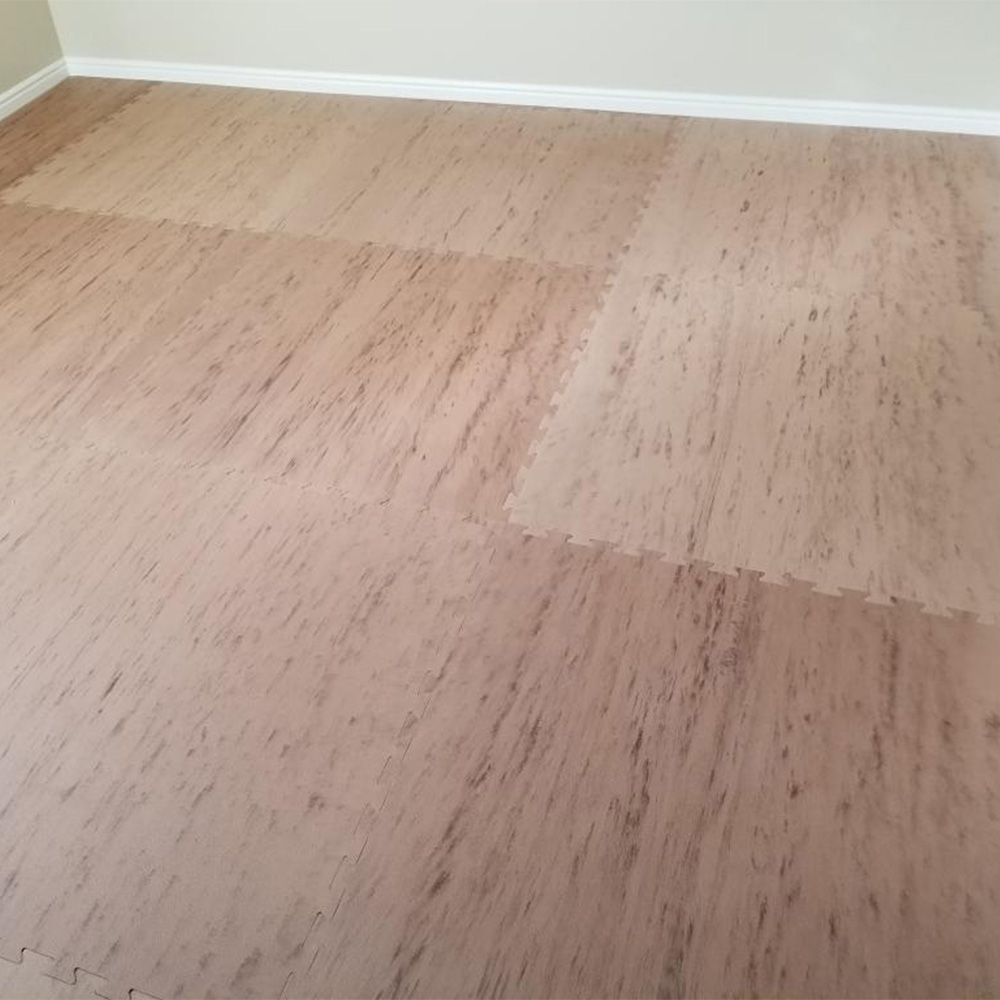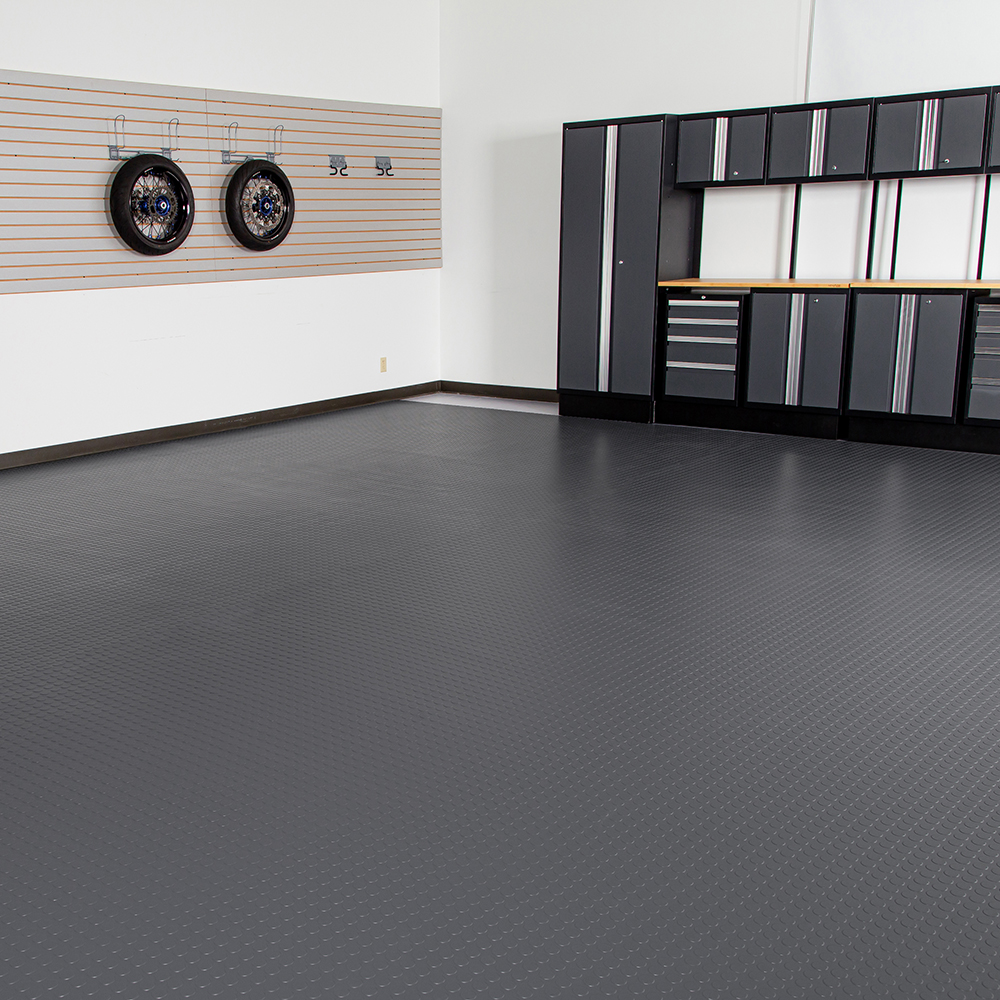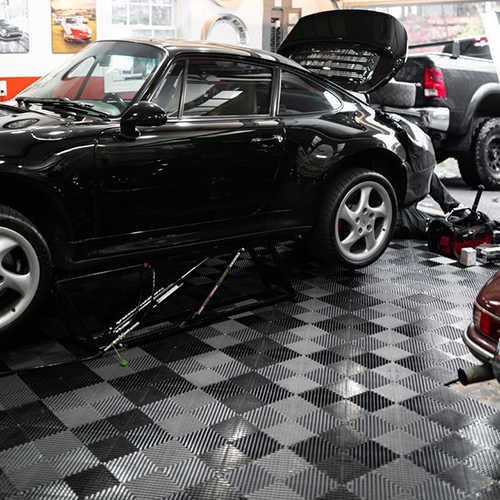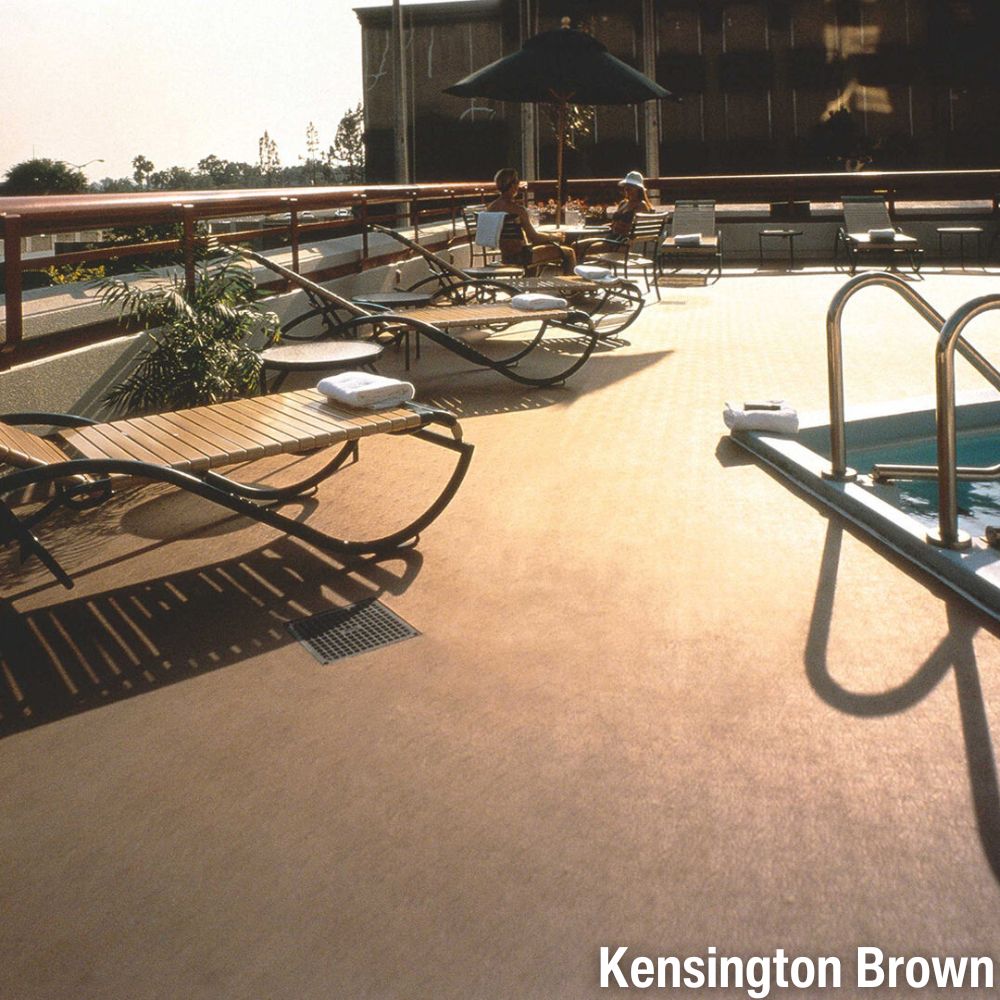A garage flooring installation can give you the ability to change the garage space to serve another function. Even if you plan to continue to park cars in the garage, the right flooring can support a car or gardening equipment whenever needed, while delivering other capabilities when you want extra gathering space at a reasonable cost.
Regardless of the use case, garage flooring often needs to have waterproof capabilities. Moisture tracked in from outdoors appears frequently on the concrete subfloor in a garage. At Greatmats, we carry the best tiles, mats, and rolls of flooring for garages that can create a workout space, a living area, and a place to park cars.
Article Library












Video Library












Ideas Before You Buy Garage Flooring
Tips & considerations for purchasing garage flooring:
The following blogs offer tips on what aspects to look for in garage flooring before making a purchase. Wherever you plan to use this flooring, these are all important things to learn before making your final decision.- Find out what garage floor tile types are available that look and perform well in any garage space. Learn More: What Garage Floor Tile Types Are Available?
- Learning how to choose the best vinyl garage flooring rolls for your space. Learn More: How to Choose the Best Vinyl Garage Flooring Rolls
- Learn about the best exercise and workout mats for converting a garage into a home gym. Learn More: What Are The Best Exercise and Workout Mats for a Garage?
Top 10 Questions About Garage Flooring
Below are the most popular questions we've received about garage flooring. Click the question to get a detailed answer and explanation on these topics.- What Flooring Materials Are Best for Enclosed Trailers? Slip-Resistant Trailer Flooring: When outfitting a trailer with flooring, making use of garage flooring is a popular choice, as it’s durable and slip resistant. Rubber tiles or plastic tiles that contain a raised traction pattern can provide a sure footing in case of dampness inside the trailer.
- What Are The Best Inexpensive Garage Flooring Ideas? Top Budget-Friendly Garage Floors: When creating a safer space inside your garage that’s slip resistant and that can stand up to vehicular traffic, you don’t have to break the bank. Inexpensive garage flooring tiles are available in various plastic models that interlock together to simplify installation.
- What Makes Garage Flooring Fit for Use With Cars? Durable Garage Floor Tiles: Garages can be harsh environments for flooring materials, but Greatmats has many flooring styles that are safe to use underneath a car. Look for flooring models that offer water resistance, oil resistance, chemical resistance, an ability to support large amounts of weight, and traction.
- What Is the Best Flooring for a Garage Gym? Create a Garage Workout Space: When you want to take advantage of the space in your garage to create an area for workouts, finding the appropriate garage flooring is important. Good flooring materials for a garage gymnasium can include foam, PVC plastic, and rubber tiles and mats.
- What Are the Best Waterproof Garage Floor Tiles? Water Resistant Garage Flooring Options: When installing flooring in a garage, using waterproof materials is important to guard against moisture tracked into the space from outdoors or that drips off cars. Materials like PVC plastic, polypropylene plastic, and rubber can provide traction in wet areas while easily covering a crack in the concrete where moisture may accumulate.
- Are Garage Floor Tiles Any Good? Best Garage Flooring Materials: Even though a garage can be a harsh environment, multiple types of garage floor tiles can deliver a high level of durability and performance while being easy to install. Firm plastic, flexible PVC plastic, and rubber tiles are especially useful in the difficult conditions inside a garage.
- What Are Good Ideas for Car Show Display Flooring? How to Create a Car Show Display Floor: When creating a temporary space to display show-quality cars, it’s important to have flooring options that look great, that support the weight of the cars, and that are easy to install. At Greatmats, we offer both interlocking tiles and rolls of flooring that are available in multiple colors and designs to match the look you are trying to create.
- What Is the Most Affordable Self-Draining Garage Floor Tile? Inexpensive Drain-Through Garage Tiles: If your garage has frequent standing water issues, installing a perforated garage flooring tile can allow the water to drain through to the concrete, keeping the surface of the tile dry. At Greatmats, we have multiple raised PVC plastic and polypropylene plastic tiles that are sturdy and that create space underneath for the water to drain away.
- What Are the Pros and Cons of Vented Garage Floor Tiles? How to Use Vented Garage Flooring Tiles: If you have a concrete garage subfloor that is uncomfortably cold to sit on or that has an in-floor heating system, our vented floor tiles allow heat from the subfloor to rise while minimizing cold spots from traditional concrete. Our perforated tiles allow water to drain away, but this means dirt can also fall through the perforations, complicating the process to clean underneath.
- What Are the Dos and Don’ts of Using Rubber Garage Flooring? Pros and Cons of Using Rubber Tiles in the Garage: If you install rubber tiles in your garage, you can create a safe space for workouts, weightlifting, or a man cave. Rubber is easy to install for someone who wants to lay out the flooring as a DIY project. However, it’s not safe to park motor vehicles on top of rubber, as leaking oil and other lubricants can break down the rubber.
Best Garage Flooring Products
TurboTile Diamond Garage Floor Tile
Our virgin polypropylene TurboTile Diamond Garage Floor Tiles are extremely durable, giving you a great value when installing them inside a garage. They are easy to assemble and disassemble for a homeowner, which saves time and money versus having to hire a professional to do the work.
TurboTile Perforated Garage Floor Tile
Having a vented garage tile inside the garage, like our TurboTile Perforated Garage Floor Tile product, allows moisture dripping from vehicles to drain through to the subfloor while preventing puddles from appearing. Our tiles can support a significant amount of weight, and they are available in three different colors that you can mix and match.
TechFloor Premium Tile With Traction Top
When you need one of the most durable types of floors for use in a garage, our TechFloor Premium Tile With Traction Top is an outstanding choice. This Made-in-America tile has a raised pattern across the surface, giving people walking across it a sure footing while also delivering long-lasting materials.
Tuff Seal Floor Tile
Our Tuff Seal Floor Tile offers both stain and chemical resistance, allowing you to create a great-looking floor in the garage that’s also easy to clean. Customers can select among more than a dozen different color choices and three different traction pattern options for the surface of these made-in-America tiles.
Diamond Pattern SupraTile
Our Diamond Pattern SupraTile is extremely thin at 4.5 mm, but it remains a highly durable garage flooring tile, providing a good value for customers. These PVC plastic tiles are resistant to oil, chemicals, mold, mildew, abrasion, impact, and moisture.
Customer Installations
Customer Mark Lund
TurboTile Diamond Garage Floor Tile Greatmats’ customer Mark Lund was looking for a high-quality car display flooring that he could take with him to car shows. He appreciates the ease of installation with our lightweight and durable tiles, and they also deliver the portability he was seeking.
Car Display: TurboTile Diamond Garage Floor Tile
Customer David Kuczer
When seeking a type of flooring for creating a workout space in the garage for his wife, customer David Kuczer reached out to Greatmats before deciding on rubber interlocking tiles. These tiles were easy to install and provided the impact absorption he was seeking for his wife’s home workouts.
Garage Gym Flooring: Interlocking Rubber Floor Tiles Color
Customer Gina Buccolo
When desiring to create a dance studio in their home’s garage, Greatmats’ customer Gina Buccolo and her daughter wanted to keep safety in mind. After Gina’s husband built a sprung floor as the base, the family ordered a Greatmats’ adagio marley roll of flooring to create a high-quality top layer to give them the ideal space for working on ballet in a safe manner.
Garage Dance Studio: Rosco Adagio Marley
Garage Flooring Installation & Maintenance Videos
Waterfowler41 TurboTile DIY Garage Flooring Installation
How To Cut Polypropylene Plastic Garage Floor Tiles - Diamond Garage Floor Tile
How To Replace Garage Flooring Tiles










